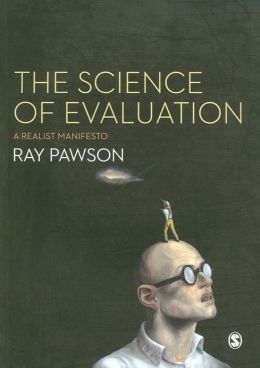Evaluation

 What is 'Evaluation'?
What is 'Evaluation'?
Evaluation is the appraisal of the investigation and the results obtained relating to the research question. It should be set in a scientific context.
For those who really want to understand how evaluation works in a scientific context I recommend reading The Science of Evaluation: A Realist Manifesto by Ray Pawson. However this goes way beyond the demands of the IB Diploma Programme.
Direct student access
Note that students have direct access to a version of this page written specifically for students (as opposed to teachers) at Evaluation in Complete course for students.
Achieving the maximum mark
Before they can address this criterion fully, students should have had practice at evaluating some of the scaffolding practicals performed prior to the Individual Investigation. Suitable practicals include, Determining the formula of magnesium oxide, Determining the Mr of an unknown gas, Determining the percentage of CaCO3 in egg shells and Enthalpy changes for example.
To score the maximum of six marks for Evaluation the Individual Scientific Investigation needs to:
- Present a detailed conclusion that is consistent with the facts presented and is completely relevant to the research question.
- Justify the conclusion by relevant comparison to the accepted scientific context.
- Discuss the strengths and weaknesses of the investigation and the methodology used. This should include limitations.
- Discuss relevant and realistic ways in which the investigation might be improved and extended.
The following three areas are particularly important when it comes to assessing 'Evaluation'
1. Conclusion
The conclusion given must be fully justified from the processed data and needs to be completely relevant to the research question. If the conclusion is quantitative then the total uncertainty of the value(s) should be included together with the appropriate units and correct number of significant figures. The result(s) obtained should be compared to the literature value(s) wherever possible and the percentage error calculated and stated.
2. Strengths and weaknesses
The percentage error should be compared with the total uncertainty to determine whether the result(s) obtained lie(s) within the tolerance of the uncertainties. Distinction should be made between random errors and systematic errors. Those uncertainties that may have a considerable effect on the final result should be identified and distinguished from uncertainties of lesser importance. The effect of all the underlying assumptions made in reaching the conclusion should be evaluated.
3. Improvements and extensions
Having identified the sources of major uncertainties, realistic improvements should concentrate on minimising these. Examples could include using more accurate measuring apparatus to record data (e.g. a digital thermometer compared to an alcohol in glass thermometer) or by improving the technique to eliminate side-reactions or minimise heat loss etc. Be specific and avoid simplistic and irrelevant suggestions.
Suggestions as to how the investigation could be extended should also be specific, realistic and relevant. Examples could include using a different method to arrive at the result or widening the investigation to include more examples.

 IB Docs (2) Team
IB Docs (2) Team 